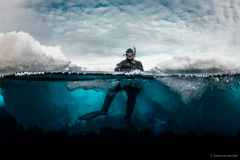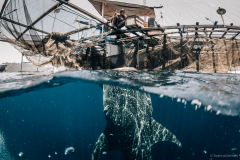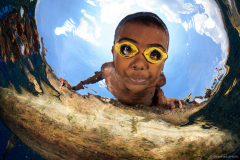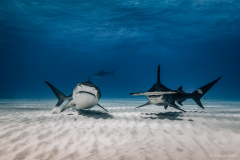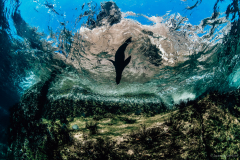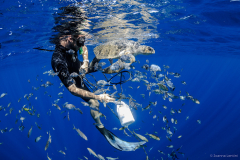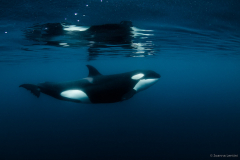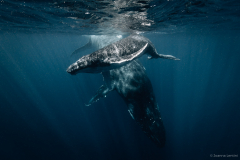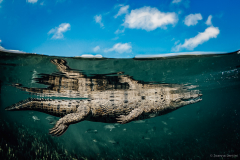In this series of articles, we’ll shine a spotlight on some of the world’s best underwater photographers. Today we highlight Joanna Lentini.
Tell us a little about yourself.
I began diving nearly 10 years ago, not knowing how different my life would become. I was living in Southeast Asia with my partner at the time, and for my birthday we went diving on the Great Barrier Reef. As I descended into that foreign world, I could not have been more terrified. But from that point forward, I learned to consistently conquer my fears. It was a turning point in my life. Even though I exited from that first dive feeling grateful that I made it back to the surface and certain I had enough, I continued to dive.
Living in New York now, I’ve been diving everywhere from the South Pacific to the High Arctic. I spend my time putting together stories related to underwater environments, wildlife photography, adventure travel and, more recently, conservation. I have been awarded by several international photography competitions, serve as the COO for the non-profit organization Oceans in Focus, and am a Nauticam ambassador. My work has been exhibited around the world and published in various publications.
How long have you been an underwater photographer?
I began shooting underwater in 2010 while I was based in Southeast Asia. With the Coral Triangle practically in my backyard, it was a better time than any to get certified to dive. Getting underwater changed everything for me. Once I got past a few of the apprehensions that I think many of us have when we begin diving, I felt completely at peace underwater. I started documenting my journeys through images and video; and I soon began writing about my experiences as well. I’ve now started organizing trips to encourage others to get out of their comfort zones and explore this amazing planet in different ways.
What got you interested in underwater photography?
I’ve always been interested in the oceans. But ultimately, the real inspiration came from too many hours of nature documentaries, such as “Blue Planet” and “Planet Earth.” I enjoyed watching the behind-the-scenes footage of the cameramen immersed in epic, natural events. One day I decided I wanted to stop watching others and learn to dive myself. But I didn’t want to simply dive — I wanted to shoot underwater. I really can’t imagine doing anything else.
What’s your favorite style of underwater photography?
I really prefer shooting wide-angle underwater. I love pelagic marine life. The sheer size of some of the creatures I get to meet never ceases to amaze me. However, that’s not to say I don’t appreciate or shoot macro images. From time to time I can get into a critter zone, but I am mostly too impatient to do it all that often. I have been trying to focus more on conservation photography. Putting together stories about conservation issues is the most important and rewarding way I can use my skills.
Any favorite subjects?
Without a doubt, my favorite animal in the ocean is the sea lion. They are super-inquisitive and make me laugh harder than anything else in this world. I could spend the rest of my days photographing them. Of course, I love sharks, and I have a new fascination with orcas as I just encountered a pod in Mexico this past year. Penguins are also pretty interesting creatures — I really love all wildlife.
Any favorite destinations?
I keep returning to the Baja Peninsula. It has an amazing array of life and particularly a great deal of pelagic life. Schooling fish, orcas, humpbacks, blue whales, scalloped and smooth hammerheads, makos, silkies, sea lions, dolphins, mobulas, mantas, and stingrays are just some of the creatures you can find there. The sun-scorched landscape and the people and culture also fascinate me.
What’s your underwater setup?
I shoot with a Canon 7D Mark II and a Tokina 10-17mm lens. I have other lenses and ports, but the Tokina is my go-to lens. My camera goes into a Nauticam housing and I use Inon Z240 strobes.
Do you have any tips for new underwater photographers?
Join trips that are geared toward photography or hire your own guide. There is nothing more frustrating than not having the proper amount of time with a subject that you traveled very far to photograph. When you find a subject to shoot, it’s important that you have enough time to set things up correctly. But don’t just focus on making an image — tell a story.
Find more of Joanna Lentini’s work on her Instagram and Twitter pages and her websites here and here.


